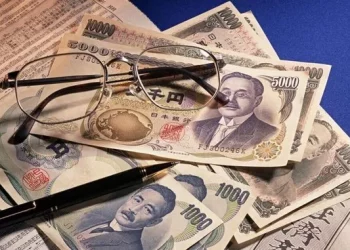The Japanese Yen (JPY) and the US Dollar (USD) are two of the most traded currencies in the world, each representing economies that play pivotal roles in global finance and trade. The JPY, the official currency of Japan, is deeply tied to the nation’s reputation for technological innovation, manufacturing excellence, and a robust export-driven economy. Japan is a global leader in industries such as automotive manufacturing, electronics, and robotics, which means the value of the Yen is often influenced by the country’s trade performance and industrial output. Additionally, Japan’s unique economic policies, such as its prolonged use of ultra-low interest rates and quantitative easing, have shaped the Yen’s behavior in international markets.Understanding the exchange rate between the JPY and USD involves examining a variety of economic factors, trade relationships, and geopolitical influences.
For instance, economic indicators like GDP growth, inflation rates, and unemployment levels in both countries provide insights into the relative strength of their economies. When Japan’s economy performs well, with strong exports and stable inflation, the Yen tends to appreciate against the Dollar. Conversely, if the US economy shows signs of robust growth, such as rising consumer spending or increased industrial production, the Dollar may strengthen against the Yen.
Historical Context of the Japanese Yen and US Dollar
The Evolution of the Japanese Yen: The Japanese Yen has a rich history dating back to the Meiji Restoration in the late 19th century. Initially pegged to silver, the Yen was later pegged to the US dollar under the Bretton Woods system. After the collapse of Bretton Woods in the early 1970s, the Yen transitioned to a floating exchange rate system, allowing its value to be determined by market forces.
The US Dollar’s Global Dominance: The US Dollar has been the world’s primary reserve currency since the end of World War II. Its dominance is supported by the size and strength of the US economy, as well as the widespread use of the dollar in international trade and finance. The Federal Reserve, the US central bank, plays a crucial role in managing the dollar’s value through monetary policy.
Factors Influencing the JPY to USD Exchange Rate
Economic Indicators: Economic indicators such as GDP growth, inflation rates, and employment figures are critical in determining the exchange rate between the Japanese Yen and the US Dollar. Strong economic performance in Japan can lead to an appreciation of the Yen, while economic instability in the US can cause the Dollar to depreciate.
Trade Relationships: Japan and the United States are significant trading partners. The balance of trade between the two countries can influence the exchange rate. A trade surplus in favor of Japan can lead to an increased demand for the Yen, thereby strengthening its value against the Dollar.
Interest Rates: Interest rates set by the Bank of Japan (BoJ) and the Federal Reserve (Fed) also impact the exchange rate. Higher interest rates in Japan can attract foreign investment, increasing demand for the Yen and causing it to appreciate against the Dollar.
Political Stability and Geopolitical Events: Political stability in both countries is essential for maintaining a stable exchange rate. Geopolitical events, such as trade wars or military conflicts, can have significant impacts on the Yen and Dollar’s values. For example, tensions between the US and China can lead to fluctuations in the JPY to USD exchange rate as investors seek safe-haven currencies.
The Role of Central Banks
Bank of Japan (BoJ): The BoJ plays a pivotal role in managing the value of the Yen. Through monetary policy tools such as interest rate adjustments and quantitative easing, the BoJ aims to maintain economic stability and control inflation. The BoJ’s policies can significantly influence the Yen’s value against the Dollar.
Federal Reserve (Fed): The Fed is responsible for the US’s monetary policy. Its decisions on interest rates and quantitative easing programs can influence the Dollar’s value. The Fed also works to ensure financial stability and support the US’s economic objectives.
Market Sentiment and Speculation: Market sentiment and speculative activities can cause short-term fluctuations in the exchange rate. Traders and investors often react to news and economic data, leading to rapid changes in the value of the Yen and Dollar. For instance, positive economic data from Japan can lead to a surge in demand for the Yen, while negative data from the US can weaken the Dollar.
Impact of Global Economic Trends
Globalization and Trade Policies: Globalization has increased the interconnectedness of economies. Trade policies, such as tariffs and trade agreements, can affect the exchange rate by altering trade flows and investment patterns. For example, a trade agreement between Japan and the US can lead to increased trade volumes, influencing the JPY to USD exchange rate.
Technological Advancements: Technological advancements in financial markets have made it easier for investors to trade currencies. This increased liquidity can lead to more volatile exchange rates, especially in response to global economic trends. High-frequency trading and algorithmic trading are examples of how technology impacts currency markets.
Case Studies: Historical Exchange Rate Movements
The 2008 Financial Crisis: The 2008 financial crisis had a profound impact on global currencies. The Yen appreciated significantly as investors sought safe-haven assets, while the Dollar experienced volatility due to the crisis’s impact on the US economy.
The COVID-19 Pandemic: The COVID-19 pandemic caused significant fluctuations in the JPY to USD exchange rate. Initially, the Yen appreciated as investors sought safety, but as the pandemic’s economic impact became clearer, the Dollar strengthened due to its role as the world’s primary reserve currency.
Future Outlook for the JPY to USD Exchange Rate
Economic Growth Projections: Future economic growth in Japan and the United States will be a key determinant of the exchange rate. Japan’s efforts to stimulate its economy through Abenomics and other policies will influence the Yen’s value, while the US’s economic recovery from the pandemic will impact the Dollar.
Policy Changes and Reforms: Policy changes, such as further monetary easing by the BoJ or changes in the Fed’s interest rate policies, will also play a significant role in shaping the exchange rate. Additionally, structural reforms in both countries can impact long-term economic performance and currency values.
Technological Innovations: Advancements in financial technology and digital currencies could introduce new dynamics to the foreign exchange market, potentially impacting the JPY to USD exchange rate. The rise of cryptocurrencies and central bank digital currencies (CBDCs) may alter traditional currency trading practices.
Conclusion
The exchange rate between the Japanese Yen and the US Dollar is influenced by a complex interplay of economic indicators, trade relationships, interest rates, political stability, and global economic trends. Understanding these factors is essential for businesses, investors, and policymakers who engage in cross-border activities between Japan and the United States. As both economies continue to evolve, the JPY to USD exchange rate will remain a critical metric for assessing economic health and making informed financial decisions.
In summary, the Japanese Yen to US Dollar exchange rate is a dynamic and multifaceted aspect of global finance. By examining historical contexts, economic indicators, and future projections, one can gain a comprehensive understanding of the forces that drive this important currency pair. Whether you’re a seasoned investor or a curious observer, keeping an eye on these factors will provide valuable insights into the ever-changing world of international currency exchange.
Related topics:



























